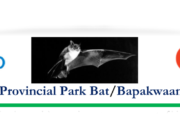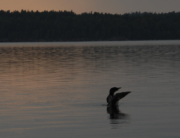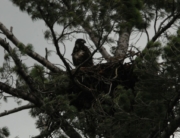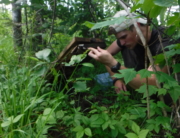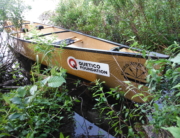by: Dr. Michael Rennie, Canada Research Chair in Freshwater Ecology and Fisheries Assistant Professor
Quetico Provincial Park has been described as a ‘natural oasis’; with all the things going on in the world, in Quetico, you can get in a canoe, traverse a few portages, and the outside world quickly melts away leaving just you and nature. Unfortunately, even in this relatively untouched oasis, unwanted visitors have begun to appear. Several aquatic invasive species now inhabit various lakes in the park, with the most prominent and widely distributed likely being the spiny water flea (or Bythotrephes to us scientists, which is the genus that these organisms belong to).
This year, thanks to generous funding from the Quetico Foundation, our lab began investigating the impacts of these small water fleas on fishes that are native to Quetico lakes, focusing on the lake herring or cisco (Coregonus artedi) and walleye (Sander vitreus). We chose these two species because the effects of spiny water flea may be very different for cisco and walleye. Previous research from our lab (and others) has shown that lake herring (which naturally feed on plankton, like spiny water flea) aren’t negatively impacted by their presence, and may actually benefit by growing faster. In contrast, recent research from collaborators in Wisconsin lakes have shown that early growth rates of Walleye are slower in lakes where spiny water flea are present.
This matters for a couple of reasons. First, slower early growth rates mean that walleye (which spawn in the spring) may not get large enough in their first year to survive over the winter- which may mean ultimately fewer walleye in the lake. Second, Walleye (and other predatory game fish like lake trout and northern pike) tend to reach much larger maximum sizes in lakes where cisco are present. So, while young walleye might do poorly in the presence of spiny water flea, larger walleye might benefit. Teasing these two possibilities apart is what we are hoping to do with our work in the park, and we can test these ideas with real data, which we will be using data from Quetico lakes to do.
Even though 2020 brought on a great deal of uncertainty and shut down many field-based research projects around the globe, we were lucky to be able to get out this summer and get started on our research. Danielle Gartshore, a recent graduate from the University of Guelph is starting her Master’s degree in Biology at Lakehead this fall. In close collaboration with Park Biologist Brian Jackson and biologists from the Ontario Ministry of Natural Resources and Forestry, she started gathering historic data from Quetico lakes this summer to start answering some of our questions, but also managed to get out in the park and do some sampling. The goal this summer, given limited time and resources, was mainly focused on trying to determine where spiny water flea are and where they aren’t in the park. Turns out we gained some valuable information from this survey- spiny water flea were found in one lake where they weren’t known to be previously (Doré Lake), whereas they weren’t detected in a lake where we thought they were (Olphant).
Danielle will be hard at work this fall testing our hypotheses, looking at ageing structures of fish to see how early growth rates differ in lakes with and without Bythotrephes and before/after they have invaded lakes in Quetico. We look forward to updating the Foundation with what she’s finding next summer.


